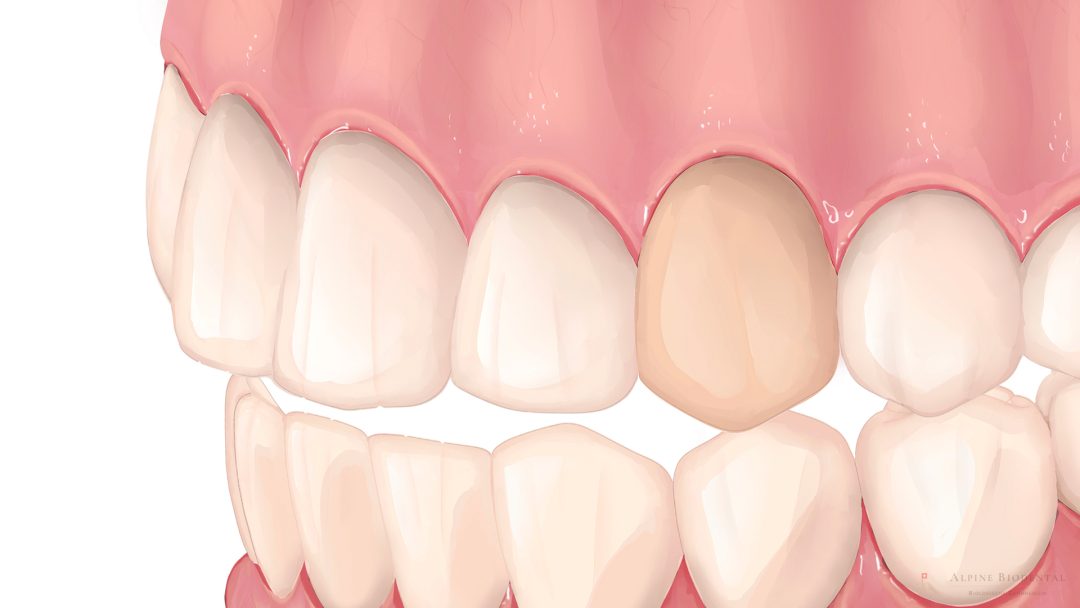Tooth Discoloration

Tooth discolorations have various causes and can result in an unaesthetic appearance of the teeth. Typically, tooth discolorations are more brown or black, but they can also be yellow or whitish.
Types of Tooth Discolorations
Two types of tooth discolorations can be distinguished: those that are superficial and can be removed through professional teeth cleaning, and those that are within the tooth structure and cannot be removed by cleaning.
Superficial Tooth Discolorations
Superficial tooth discolorations include:
- Plaque and tartar on the teeth, causing a yellowish or light brown discoloration.
- Deposits of pigments from food or smoking. For example, turmeric can cause yellow discoloration, and coffee, tea, or smoking can result in brownish tooth discoloration.
- Specific bacteria in the oral flora can cause black discoloration at the tooth margin.
Deeper Tooth Discolorations
These are located in the enamel or even dentin and cannot be eliminated by professional teeth cleaning.
- Active or already mineralized cavities often contain embedded pigments, appearing brownish.
- Fluorosis due to excessive fluoride intake during childhood. This can cause whitish, chalky spots on the teeth.
- A dead tooth, for instance, after a root canal treatment, can become darkly discolored and stand out in the dental arch.
Removing Tooth Discolorations
Superficial tooth discolorations can be completely removed through professional teeth cleaning.
Deeper discolorations, however, can only be eliminated by drilling them out and replacing them with a composite filling or by applying a ceramic crown or veneer to the tooth.
In general, tooth discolorations are not pathological but rather an aesthetic concern. The exact decision on how to treat the discoloration should be discussed with a knowledgeable dentist.
Further information
The additional information aims to provide you with a better overview of the topic.